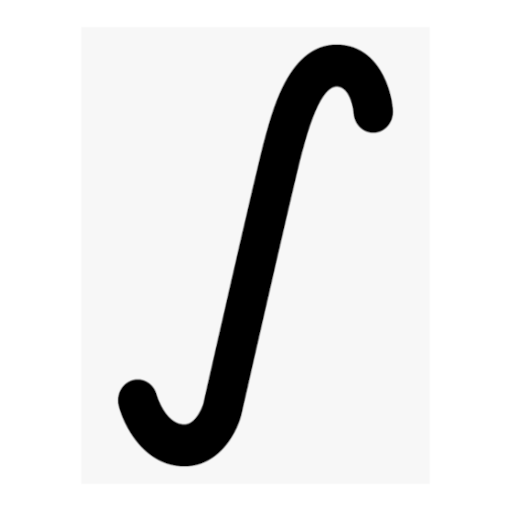Consider the function defined by y = x^(sin(x)^sin(x)). Observe its graph. Find an increasing function which passes through each of its local maximums, and another increasing function which passes through each of its local minimums.
Extra credit: You’ll notice the graph isn’t drawn for x-values which make sin(x) negative. This is because most of those values make the function undefined - though it is defined for infinitely many points in those intervals, it just also has infinitely many holes. Since it lacks continuity here, it has no true local maxes or local mins, and doesn’t impact the original problem. We can nonetheless cheat and fill in the holes by expanding the function to these regions with y = x^|sin(x)|^sin(x) (Using x^-|sin(x)|^sin(x) should also be technically valid, but is being ignored because it’s discontinuous with the rest of the graph and not as pretty, but will be mentioned in my solution). Doing so adds more local maxes and local mins. The new local mins should line up with your function that finds the local maxes for the original function - but, find a new function which hits all of the new local maxes.


Alright so, I did first-year university level maths so I know enough to be dangerous, but not enough to follow anything exciting.
Where is sin(x) undefined? That’s a concept I’m not aware of, and I love myself a function with random quirks - so would love to be pointed in a direction to learn more…
…and more importantly, can you add additional function intervals within the current gaps to draw a single curve in that new interval, so as to output an almighty upwards-trending UwUwUwUwUwU…?
sin(x) is defined everywhere - it’s sin(x)^sin(x) that has undefined spots: A negative number can only be raised to a negative power if that negative power can be expressed as a rational number with an odd denominator. That doesn’t describe most real numbers, so sin(x)^sin(x) is undefined for most values that make sin(x) negative. It does still describe infinitely many values, though - and the extra credit graph kinda just connects them up.
Man that’s really cool, I love that sort of thing - thank you for pointing out my oversight.
It’s times like this that I wish I’d carried a math pathway forward… and then I look back and think “maybe I should have learned to stay in my lane when integration-by-parts became a thing” 😂
Thanks though, friend!
No worries! The idea isn’t too bad - it all comes down to that you can’t take the square root of a negative number, but that you can take the cube root of a negative - or in general, you can’t take even roots of negatives, but you can take odd roots of negatives. Remember that if your exponent is a/b, it’s like taking a power of a, and a root of b. So something like (-25)^(1/2) is asking for the square root of -25, which isn’t defined (since we’re not considering complex numbers in this problem). On the other hand, something like (-125)^(1/3) is perfectly fine: It’s just -5, since -5 * -5 * -5 = -125. That’s why negative numbers to exponents which can be written as a rational number with an odd denominator are defined, regardless of the sign of the exponent. If a is negative and a^b is defined, then |a^b| will always equal |a|^b - like how |(-125)^(1/3)| = |-125|^(1/3) = 125^(1/3) = 5
When you write that rational exponent, its numerator will be even or odd, too. If the exponent is even, then the answer will end up positive: Negative numbers have negative odd roots, and negative numbers to even powers are positive. On the other hand, if the exponent is odd, the answer will end up negative: Negative numbers to odd powers are still negative. So if your expression is x^x and is defined, and x is negative, you know it’s going to equal either |x|^x or -|x|^x. Here’s an example of each case:
(-1/3)^(-1/3) = -1.4422495 = -(1/3)^(-1/3) (a case for x^x = -|x|^x)
(-2/3)^(-2/3) = 1.31037 = (2/3)^(-2/3) (a case for x^x = |x|^x)
And that’s why the two extension functions I mention wrap the first sin(x) in parenthesis, and swap its sign around. The actual y = x^(sin(x)^sin(x)) has infinitely many points that lie on both of those functions (within the intervals where sin(x) is negative - so within the intervals where desmos seemingly graphs nothing) already - desmos just isn’t graphing them, and these new functions are filling in the gaps so everything gets drawn. The gaps happen for irrational numbers and for any rational number with an even denominator - but if you actually put a point at every defined value, you would get a graph that looks like this (only taking principle real roots). If you allowed graphing both real roots when available, you’d get this. If you wanted to go to negative x-values too you’d get this.
All the points you see on that final graph correspond to (x, y) values that do satisfy just the original equation, y = x^sin(x)^sin(x) - them not displaying in the original graph is a combination of desmos not graphing individual discontinuous points, and desmos only graphing primary roots in equations set up as functions. So it’s a case where those points exist on the graph, but lack any continuity: It’s just infinitely many non-connected points, that are nonetheless dense enough that you could zoom in forever and still always see infinitely many defined points in any given region. The key is that between any two real numbers, there are always infinitely many rational numbers, infinitely many of which can be written with odd denominators - so there are points everywhere, just not everywhere enough.